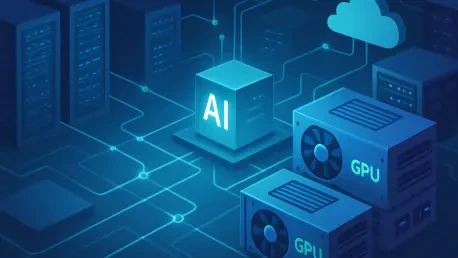I’m thrilled to sit down with Chloe Maraina, our resident Business Intelligence expert, who has a deep passion for weaving compelling visual stories from big data. With her sharp insights into data science and a forward-thinking vision for data management and integration, Chloe is the perfect person to dive into the complexities of scaling AI infrastructure. Today, we’ll explore the ambitious Stargate AI initiative, the hurdles it faces in execution, and the broader implications for enterprise IT leaders navigating similar challenges. Let’s unpack the intricacies of land, energy, stakeholder coordination, and long-term planning in the world of AI infrastructure.
How would you describe the vision behind the Stargate AI initiative, and why is it such a pivotal project for its stakeholders?
The Stargate AI initiative is a massive undertaking aimed at building a transformative data center infrastructure to power the next generation of AI capabilities. It’s not just about raw compute power; it’s about creating a foundation for innovation at an unprecedented scale. For the stakeholders, particularly SoftBank, this project represents a bold bet on the future of AI, backed by a staggering $500 billion investment. It’s pivotal because it positions them as leaders in a space where AI infrastructure could define competitive advantage for decades, aligning with their broader strategy of driving technological disruption.
What do you see as the biggest roadblocks causing delays in a project of this magnitude?
The delays in Stargate aren’t surprising when you look at the sheer complexity involved. Site selection is a huge challenge—finding the right locations with access to land, energy, and connectivity isn’t a quick process. Then there’s the stakeholder piece; you’ve got to align a wide range of players, from local governments to utility providers, and those negotiations can drag on. On top of that, technical and construction hurdles—like ensuring the infrastructure can handle the immense power demands of AI workloads—add layers of difficulty. It’s a slow grind to get all these elements in sync.
Despite these setbacks, there’s confidence in meeting long-term financial targets. How do you think such optimism is sustained in the face of delays?
I think it comes down to a strategic mindset. The leadership behind Stargate seems to be playing the long game, prioritizing getting the first model right over rushing to meet short-term deadlines. They’re likely focusing on meticulous planning and simultaneous progress across multiple sites to maintain momentum. Financially, sticking to a target like $346 billion over four years suggests they’ve got contingency plans and a diversified approach to resource allocation. It’s about building trust with investors by showing that delays are tactical, not structural.
How do the challenges with Stargate reflect broader issues in scaling AI infrastructure across the industry?
Stargate’s struggles are a microcosm of what many companies face when scaling AI infrastructure. Land and energy constraints are almost universal—AI data centers need massive power and space, which are finite resources. Stakeholder alignment is another recurring pain point; getting everyone on the same page, from regulators to suppliers, often slows down even the best-planned projects. These aren’t just technical IT challenges; they’re logistical and political puzzles that require patience and coordination beyond what most traditional IT upgrades demand.
Speaking of coordination, can you elaborate on the role of non-technical stakeholders in making AI infrastructure projects successful?
Absolutely. AI infrastructure isn’t just about servers and GPUs—it’s about orchestrating an entire ecosystem. Utilities are critical; without reliable, high-capacity power, these data centers can’t operate. Regulators play a huge role too, as zoning laws and environmental policies can make or break a site. Then you’ve got construction partners, hardware suppliers, and even local communities who need to be factored in. Getting everyone to move at the same pace is incredibly tough because each group has its own priorities and timelines, which rarely align perfectly.
Analysts have suggested treating AI infrastructure as a cross-functional transformation rather than a simple IT upgrade. How does that perspective shift the planning process?
It completely reframes how companies approach these projects. Viewing AI infrastructure as a cross-functional transformation means you’re not just solving for tech—you’re solving for business, operations, and even societal impact. Planning has to start much earlier and involve teams like finance, legal, and facilities from day one. It’s about long-term, ecosystem-wide thinking rather than siloed IT goals. This mindset pushes companies to anticipate bottlenecks like energy or regulatory hurdles well before they break ground, ensuring the project isn’t just a tech rollout but a strategic evolution.
What lessons can enterprise IT leaders draw from Stargate’s slow start when planning their own AI infrastructure initiatives?
One big takeaway is the importance of modular, phased approaches. Instead of banking on a single flagship facility, IT leaders should design hybrid strategies that allow progress even if key pieces lag. Another lesson is to bake external readiness into your assumptions—don’t assume perfect alignment with providers or stakeholders. Set up regular coordination checkpoints and build flexibility into timelines. Stargate shows that it’s less about avoiding delays and more about resequencing delivery to match ecosystem realities, ensuring you’re not left stranded by dependencies.
Looking ahead, what is your forecast for the future of AI infrastructure projects like Stargate?
I’m cautiously optimistic. Projects like Stargate will likely face ongoing challenges with land, energy, and coordination, but they’re also paving the way for smarter approaches to AI infrastructure. I foresee a shift toward more distributed, modular setups that reduce reliance on mega-sites, paired with innovations in energy efficiency to tackle power constraints. Over the next decade, I think we’ll see tighter collaboration between tech companies, governments, and utilities to streamline these rollouts. The growing demand for AI will force the industry to adapt, turning today’s bottlenecks into tomorrow’s best practices.









